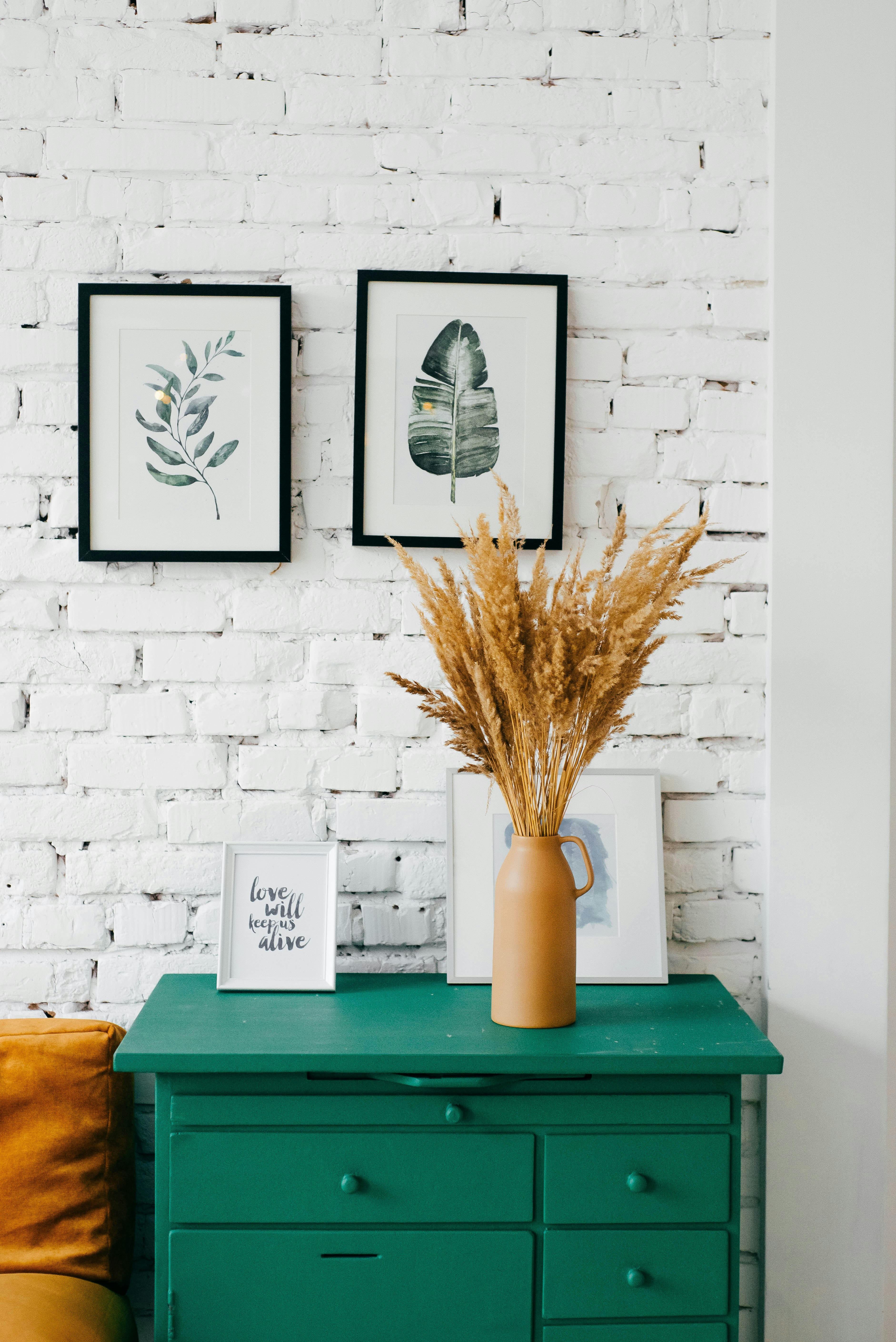As we age, our comfort and safety become increasingly important, especially in our own homes. That’s why the concept of ergonomics for the elderly is essential in designing a living space that promotes a sense of well-being and minimizes physical strain. In this comprehensive and detailed article, you’ll find everything you need to know about creating a home environment that prioritizes safety and comfort for seniors. Whether you’re a senior yourself, a family member, or a caregiver, this article is here to educate and inform you on the best practices for designing an ergonomic home. So let’s delve into the world of ergonomics for the elderly and discover how you can make your living space a haven of safety and comfort.
Importance of Ergonomics for the Elderly
As we age, it becomes increasingly important to prioritize the safety, comfort, and well-being of our elderly loved ones. One key aspect of achieving this is by incorporating ergonomic design principles into their living spaces. Ergonomics focuses on creating environments that cater to the needs and abilities of individuals, promoting their physical health and overall quality of life. In this article, we will explore the various benefits of ergonomics for the elderly and provide practical tips on how to design a safe and comfortable home.
Understanding the Aging Process
Before diving into the specifics of ergonomic design, it is crucial to understand the aging process and its impact on the body. The natural aging process brings changes to physical strength, flexibility, vision, hearing, and overall mobility. These changes can result in decreased balance, increased risk of falls, joint pain, and difficulty performing daily activities. By recognizing and accommodating these changes, we can create living spaces that support the unique needs of older adults.
Benefits of Ergonomics for the Elderly
Implementing ergonomic principles in the home environment offers numerous benefits for the elderly. Firstly, it promotes safety by reducing the risk of falls and accidents. Properly designed spaces minimize tripping hazards, provide ample lighting, and incorporate supportive elements such as grab bars and handrails. Secondly, ergonomics enhance comfort by ensuring furniture, appliances, and fixtures are tailored to the needs of older adults. Comfortable seating, adjustable beds, and appropriate table heights all contribute to a more pleasant living experience. Lastly, ergonomic design improves accessibility, allowing older adults to maintain their independence and continue performing daily activities with ease.
Creating a Safe and Comfortable Environment
A safe and comfortable home environment is essential for the well-being of elderly individuals. In this section, we will explore specific areas of the home that can be optimized with ergonomic design principles.
Functional Home Design
Designing a functional home for the elderly involves considering ease of access and clearance throughout the living space. It is important to ensure doorways and hallways are wide enough to accommodate mobility aids such as walkers or wheelchairs. Creating open floor plans and reducing clutter can also facilitate movement.
Easy Access and Clearance
Incorporating ergonomic design into the home starts with ensuring easy access and clearance in every room. Adequate clearance around furniture and fixtures allows for safe and unobstructed movement, minimizing the risk of falls. It is important to arrange furniture in a way that allows for easy navigation and consider removing unnecessary obstacles to create a spacious and accessible environment.
Appropriate Lighting
good lighting is essential for the elderly, as it enhances visibility and reduces the risk of accidents. Well-lit areas can help older adults navigate their surroundings more easily and identify potential hazards. Natural lighting is preferable, but if it is not readily available, installing bright and adjustable artificial lighting is highly recommended.
Slip-resistant Flooring
Slippery floors pose a significant risk for older adults, particularly in areas prone to wetness, such as bathrooms and kitchens. Opting for slip-resistant flooring materials, such as cork or rubber, can greatly reduce the risk of falls. Additionally, using rugs or mats with non-slip backings and securing them firmly to the floor with double-sided tape or nonslip pads can also contribute to a safer living space.
Grab Bars and Handrails
Installing grab bars and handrails in key areas of the home, such as bathrooms, staircases, and hallways, provides valuable support for older adults with reduced mobility. These assistive devices allow individuals to maintain their balance, prevent falls, and navigate their environment with confidence. Securely mounting these bars and rails at appropriate heights and ensuring they can bear the weight of a person are crucial factors to consider.
Adjustable Furniture
Ergonomic furniture plays a significant role in providing comfort and accessibility for the elderly. Adjustable chairs, for example, allow for customized seating positions based on individual needs. Additionally, furniture with armrests can facilitate easier sitting and standing, while recliners and lift chairs provide extra support and assistance for those with mobility limitations.

Ergonomic Furniture
Choosing the right furniture is an essential aspect of creating an ergonomic and age-friendly home. Here, we will explore some key considerations when selecting furniture for the elderly.
Choosing the Right Chair
A supportive and comfortable chair is crucial for the elderly, as they may spend a significant amount of time sitting. Opt for chairs with proper lumbar support to maintain good posture and avoid back pain. Additionally, chairs with adjustable height and armrests provide added convenience and accessibility.
Supportive Mattresses and Pillows
A good night’s sleep is vital for overall health and well-being. Opting for mattresses and pillows that provide proper support and accommodate individual needs can greatly improve sleep quality for the elderly. Memory foam mattresses and contour pillows conform to the body’s contours, relieving pressure points and reducing the risk of discomfort or pain.
Adjustable Beds
Adjustable beds offer numerous benefits for the elderly, allowing them to find the most comfortable positions for sleeping, sitting up, or getting in and out of bed. These beds can provide relief from conditions such as sleep apnea, acid reflux, or poor circulation. Additionally, they can help individuals with limited mobility avoid excessive strain or discomfort.
Proper Height and Positioning of Tables
When selecting tables and desks for the elderly, consider their height and ease of use. Tables at the appropriate height can minimize the risk of back strain and make it easier for individuals to reach items on the surface. Additionally, adjustable tables allow for customization based on specific needs and activities.
Kitchen Ergonomics
The kitchen is a central part of any home, and it is essential to ensure it is designed with ergonomic principles in mind. Here, we will explore specific considerations for an age-friendly kitchen.
Accessible Cabinets and Pantries
Adjusting the height of cabinets and installing pull-out shelves or drawers can greatly enhance accessibility in the kitchen. By bringing items within reach, seniors can reduce the need for strenuous bending or stretching, minimizing the risk of strain or falls. Lowering the height of upper cabinets or installing open shelving can also facilitate easier access to frequently used items.
Ergonomic Kitchen Tools
Using ergonomic kitchen tools can make meal preparation safer and more enjoyable for the elderly. Tools with larger handles or grips can provide better control and reduce strain on the joints. Electric can openers, jar openers, and ergonomic utensils with built-in supports or adapted handles are just a few examples of tools that are specifically designed to make cooking tasks easier for older adults.
Safe Stove and Oven Operation
To ensure kitchen safety, it is necessary to focus on the ergonomic aspects of stove and oven operation. Opt for appliances with clearly marked controls and easy-to-read displays. Induction cooktops that do not generate excessive heat on the surface can be beneficial, as they reduce the risk of burns. Additionally, installing automatic shut-off features and accessible fire extinguishers are important safety measures.
Comfortable Dining Area
Creating a comfortable and accessible dining area is crucial for ensuring older adults can enjoy their meals with ease. Consider using chairs with cushioned seats and backs to provide optimal comfort during meals. Adjustable-height tables allow for customization based on individual needs, ensuring a comfortable and ergonomic dining experience.
Bathroom Safety
The bathroom is another area in the home that requires careful attention to ergonomic design. Here, we will discuss specific measures for creating a safe and functional bathroom for the elderly.
Walk-in Showers or Bathtubs
Walk-in showers or bathtubs with low or no thresholds are excellent additions for an age-friendly bathroom. These fixtures minimize the risk of tripping and make it easier for individuals with mobility limitations to enter or exit the bathing area. Adding grab bars and a shower seat can provide further support and convenience.
Raised Toilet Seats
Installing raised toilet seats can greatly improve bathroom accessibility for the elderly. With a higher seat height, individuals with limited mobility or joint pain can sit down and stand up with less effort. These seats can be easily mounted onto existing toilets and are available in different heights to accommodate individual needs.
Non-slip Bath Mats
Placing non-slip bath mats inside and outside the shower or bathtub can prevent accidental slips and falls. It is important to choose mats with secure suction cups to ensure they stay firmly in place. Mats should have a textured surface to provide added grip and reduce the risk of slipping, even with wet feet.
Adequate Lighting
Proper lighting in the bathroom is crucial for visibility and safety. Installing bright and adjustable lighting, including in the shower area, ensures optimal visibility, reducing the risk of accidents. Additional lighting near the toilet area and vanity can further enhance visibility during nighttime bathroom visits.
Proper Ventilation
Good ventilation is important in the bathroom to prevent moisture buildup and reduce the risk of mold or mildew. Installing exhaust fans or opening windows helps remove excess humidity, helping to maintain a clean and safe environment. Adequate ventilation also contributes to a more comfortable and pleasant bathroom experience.
Smart Home Technology
Technology has advanced significantly in recent years, and many innovative devices can enhance the safety and comfort of older adults within their homes. Here, we will explore some examples of smart home technology that can benefit the elderly.
Voice-Activated Controls
Voice-activated devices, such as smart speakers or virtual assistants, can provide a convenient hands-free way to control various aspects of the home. Older adults can use voice commands to adjust lighting, temperature, or play music, making their daily routines easier and more enjoyable.
Automated Lighting
Automated lighting systems can be programmed to turn on and off at specific times or in response to motion. This feature ensures that the elderly are not left in the dark, even when they may forget to turn on or off lights. Motion-activated lights are particularly useful for nighttime navigation, providing a well-lit path to prevent falls or accidents.
Smart Thermostats
Smart thermostats allow for centralized temperature control and can be adjusted remotely via a mobile device. This technology ensures comfortable and consistent temperatures throughout the day, reducing the risk of overheating or being too cold. Additionally, programmable thermostats can help save energy and reduce utility costs.
Assistive Devices and Wearables
Assistive devices and wearables, such as medical alert systems or fall detection devices, are invaluable for ensuring the safety and well-being of older adults. These devices can automatically detect falls or emergencies and alert the necessary contacts or emergency services. Wearing devices that monitor vital signs or track activity levels can also provide valuable health information.
Home Security and Emergency Preparedness
Maintaining a secure and well-prepared home environment is essential for the peace of mind of the elderly and their caregivers. Here, we will discuss specific measures to enhance home security and emergency preparedness.
Secure Entryways
Ensuring the security of entryways is crucial for protecting the elderly and their belongings. Installing sturdy locks and deadbolts on all exterior doors provides a greater sense of security. Additionally, using peepholes or video doorbell systems allows individuals to verify visitors before opening the door.
Fire and Smoke Alarms
Properly functioning fire and smoke alarms are essential for early detection and prevention of fires. It is important to install alarms in every room, especially near sleeping areas. Regularly testing and maintaining these alarms, along with replacing the batteries according to the manufacturer’s instructions, is vital for optimal safety.
Emergency Contact Systems
Having a reliable emergency contact system in place is vital for the elderly, particularly for those living alone. Medical alert systems, with wearable devices or wall-mounted buttons, allow individuals to call for help quickly in case of emergencies. It is crucial to update emergency contact information regularly and clearly display it in a visible area for easy access.
Accessible First Aid Supplies
Keeping a well-stocked first aid kit readily available is essential for dealing with minor injuries or emergencies at home. Ensure the kit contains essential items such as bandages, antiseptic solutions, pain relievers, and a list of emergency contact numbers. The kit should be easily accessible and clearly labeled for quick and efficient use.
Creating an Age-friendly Outdoor Space
Leveraging ergonomic design principles should not be limited to the interiors of a home; the outdoor spaces should also be considered. Here, we will discuss how to create an age-friendly outdoor environment.
Easy-to-navigate Pathways
Designing clear and easily navigable pathways throughout the outdoor space is essential. Wide paths with smooth surfaces, free from obstacles such as uneven ground or loose gravel, ensure safe and comfortable mobility. Adding ramps or handrails where necessary can also facilitate movement for individuals with mobility challenges.
Comfortable Seating Areas
Designing comfortable seating areas in the outdoor spaces allows older adults to enjoy the fresh air and natural surroundings. Opt for chairs with armrests and cushions for added comfort. Providing shade through umbrellas or canopies helps protect against excessive heat and sun exposure, ensuring a more pleasant outdoor experience.
Gardening Tools and Adaptations
Gardening can be a fulfilling and therapeutic activity for older adults. However, it is important to make gardening tools and tasks more ergonomic and accessible. Tools with larger handles or extended lengths reduce strain on the joints and make gripping easier. Elevated planting beds or containers can eliminate the need for excessive bending or kneeling, reducing physical strain.
Proper Lighting and Security Measures
Ensuring adequate lighting in the outdoor space is just as important as indoor lighting. Well-lit pathways, entrances, and seating areas prevent accidents and deter intruders. Installing motion-activated lights or solar-powered garden lights along the walkways and around the perimeter of the property can provide both safety and ambiance.
Assistive Devices and Technologies
Assistive devices and technologies play a significant role in enhancing the independence and quality of life for the elderly. Here, we will discuss some common examples of assistive devices and technologies.
Mobility Aids
Mobility aids such as walkers, canes, or wheelchairs are essential for providing support and assistance to older adults with balance or mobility issues. Selecting the right type of aid based on individual needs, along with proper fitting and instruction, helps promote safe and independent movement.
Hearing and Vision Aids
Hearing and vision impairments are common among the elderly, affecting their communication and mobility. Hearing aids, glasses, or contact lenses are effective tools for improving sensory perception and quality of life. Regular check-ups with hearing and vision specialists can ensure optimal aid usage and adjustment.
Medication Reminders
Keeping track of medication routines can be challenging for older adults. Medication reminders, such as pill organizers, alarms, or smartphone apps, help ensure medication is taken as prescribed. These reminders can help avoid missed doses or accidental overuse, promoting better health management.
Smart Home Monitoring Systems
Smart home monitoring systems use sensors and cameras to detect movement, monitor environmental conditions, and keep track of daily routines. These systems can provide peace of mind for older adults and their caregivers, as they allow remote monitoring and communication. Fall detection sensors or emergency call buttons are often integrated into these systems, addressing potential risks.
Incorporating Universal Design Principles
In addition to specifically targeting the needs of the elderly, incorporating universal design principles ensures that individuals of all ages and abilities can navigate and use the living space comfortably. Here, we will explore specific universal design considerations.
Wide Doorways and Hallways
Wide doorways and hallways allow for smooth passage of mobility aids and reduce the risk of collisions or obstacles. Doorways should have a minimum width of 32 inches to accommodate wheelchairs and walkers, and hallways should be wide enough to allow for easy maneuverability.
Zero-step Entryways
Zero-step entryways eliminate the need to navigate steps, making it easier for individuals with mobility limitations or using mobility aids to enter or exit the home. Ramps or gradual slopes can replace traditional steps, ensuring safe and barrier-free access for all.
Lever Handles and Touchless Controls
Replacing traditional doorknobs with lever handles makes it easier for individuals with limited hand strength or dexterity to operate doors. Similarly, incorporating touchless or easily operable controls for faucets, light switches, or appliances promotes independence and accessibility for people of all abilities.
Multilevel Countertops
Installing multilevel countertops with varying heights provides flexibility for individuals of different heights or abilities. Lower countertops allow for easy access from a seated position or for individuals using mobility devices, while higher countertops provide comfortable standing workspaces.
Color Contrasts for Visual Impairment
Using contrasting colors on surfaces, edges, and furniture aids individuals with visual impairments in distinguishing between different elements within their environment. Ensuring that light switches, doorknobs, and essential items are easily visible against their backdrop enhances accessibility and reduces the risk of accidents.
In conclusion, ergonomics plays a vital role in designing safe and comfortable living spaces for the elderly. By understanding the aging process and incorporating ergonomic principles, we can create homes that promote safety, comfort, and accessibility. Whether it’s through functional home design, ergonomic furniture, or smart home technology, there are various ways to improve the living environment for older adults. By implementing these strategies, we can enhance the quality of life for our aging loved ones and ensure their well-being and independence for years to come.




